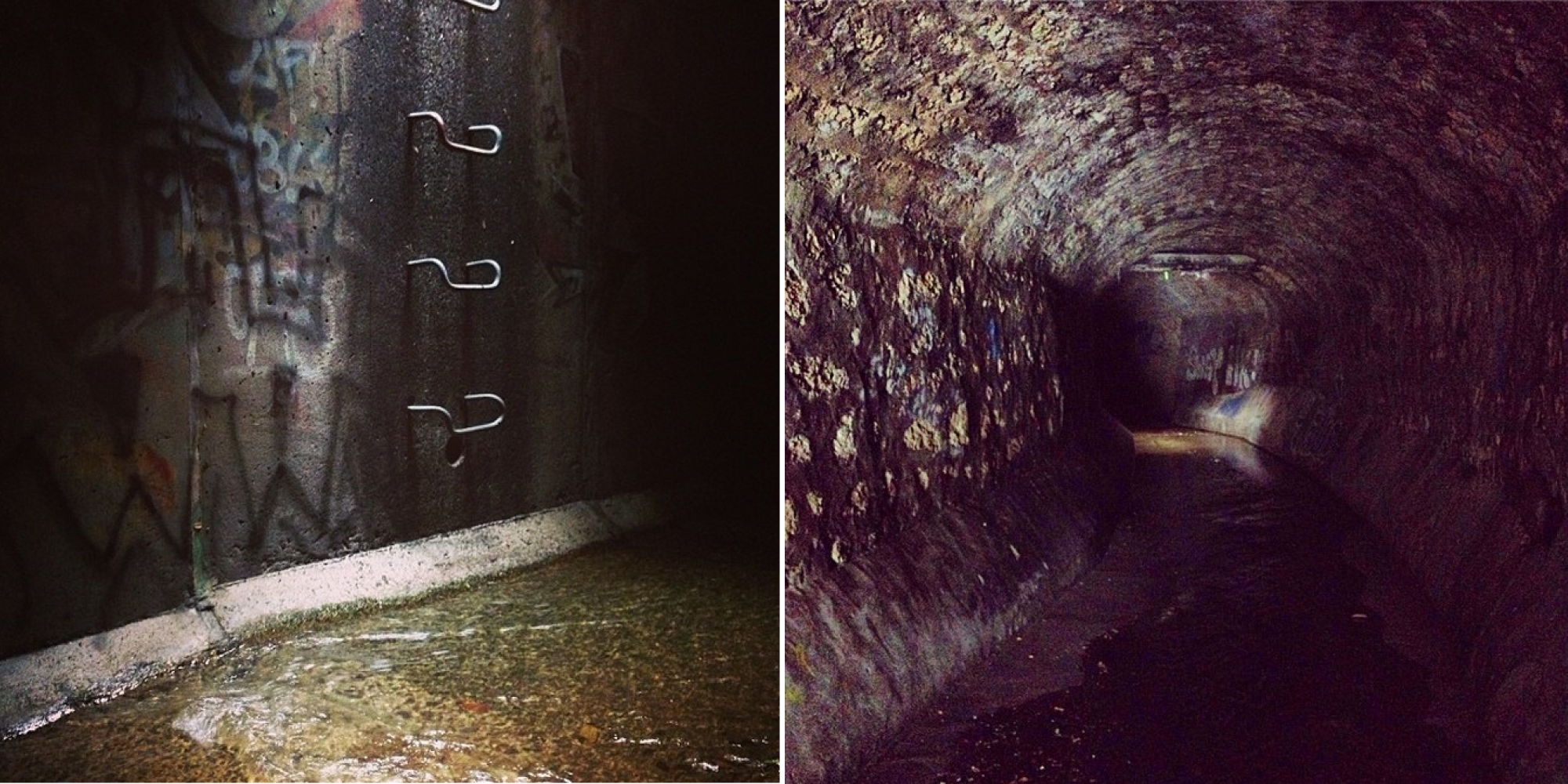Makiki Stream, through the eyes of Sean Connelly.
Originating near the Blaisdell Arena and running underneath Ward Warehouse into the ocean, there is a hidden irrigation ditch that used to bring water to taro patches at Kewalo Harbor. Today, covered by buildings, it is impossible to tell what this ‘auwai looks like or if and when water flows through it.
This waterway is just one of many to have been covered by development that occurred in the islands during the 19th and 20th century. Globally, it is part of a worldwide mindset that used waterways for waste structures or saw them as obstacles and directed them under freeways and parking lots, into concrete pathways, or between homes (28,000 rivers have disappeared in China; Nat Geo documented 11 rivers forced underground for their series on global water issues). According to the Hawai’i Streams Assessment, there are more than 70 streams in Hawai‘i that have been channelized—at least partially rerouted or directed underground—and at least 100 perennial streams on the islands have been permanently altered by channelizing. Sean Connelly, an O‘ahu-born artist and graduate student at Harvard University studying urban development with a focus on traditional Hawaiian systems, has been mapping streams in the islands since 2008.
Connelly has walked the length of Makiki Stream, which goes underground at Lunalilo Freeway (also known as the H-1) and resurfaces at Jack in the Box. Pauoa Stream goes underground in Chinatown, running under Legends, and comes out at the Cultural Plaza. Kaneohe was made possible by a dam that permanently altered the way water moved to and through the bay.
“In terms of urban development, for the past century or two, a lot of ideologies and themes are based on the idea that we need to pull ourselves away from water, which is kind of funny since cities historically developed around water,” Connelly says. “The question became, how can humans control water?”
The future of the Kaka’ako ‘auwai and its upstairs neighbor, Ward Warehouse, is now in the hands of Howard Hughes Corp., which recently announced the structure will be torn down. Connelly has hope that the ‘auwai, and Kaka’ako’s general watershed, will be reincorporated into the area (“daylighting” is the term for uncovering waterways such as rivers that were directed underground), or embraced again in a movement towards urban landscaping. He imagines parks could help alleviate flooding during wet seasons (also known as “flux spaces”); ecological landscaping that could filter storm runoff before it reaches the ocean.
For Connelly, the future of development can be a reflection of the past. “Hawai‘i really is in my mind the leader of the culture of stream environments and reincorporating broken streams,” he says. “Hawai‘i has a precedent for how water can be incorporated into a political environment.” The ahupua‘a system help define area by their watersheds, which meant that the entire gamut, from mountain to ocean, was incorporated into life and economy.
Regardless of developers, Hawai‘i residents can take part in recognizing the intricate watershed system of our islands, by simply asking a question or two. Says Connelly, we can ask ourselves, “Where is my stream?” And, he says, we can also, while cruising down Lunalilo Freeway, consider the fact that we drive over several streams—some of which we can see, and some that are hidden underground.
Learn more about Connelly’s research at his Hawai’i Futures website. To learn more about streams and other issues in Hawai’i through narratives, Connelly also recommends The Value of Hawaii 2, which is the main sponsor of the Walk #1: Streams event.
EVENT
Walk #1: Streams
Thursday, August 22, 6:30 p.m. to 9 p.m.
Kaka’ako Agora, 441 Cooke St.
Sean Connelly will present on channelized streams on O‘ahu, including the ‘auwai in Kakaako and a virtual tour of Makiki Stream. Afterwards, there will be a screening of Lost Rivers, a film that traces the story those who explore subterranean rivers in their cities with the hope of bringing them to light. This event is done in collaboration with Values of Hawaii 2 and Honolulu Museum of Art.

